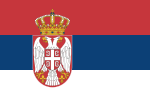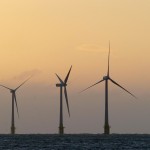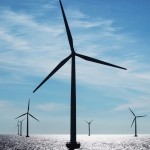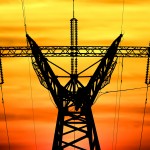 Serbia is dealing with a sluggish economy while it tries to develop a much-needed renewable energy sector.
Serbia is dealing with a sluggish economy while it tries to develop a much-needed renewable energy sector.
The Balkan nation currently relies on coal and oil, but has a significant renewable energy potential. The country’s first 6 MW of installed wind energy capacity are due to come online this year.
Currently, 25% of Serbia’s electricity comes from hydro power, and wind looks set to become the next renewable power source to contribute to the mix, with about 100 MW expected by the end of 2012.
 France officially joined the offshore wind power sector on Tuesday with an announcement by President Nicolas Sarkozy that the government would initially invest more than €10 billion on sea-based wind farms off northern France.
France officially joined the offshore wind power sector on Tuesday with an announcement by President Nicolas Sarkozy that the government would initially invest more than €10 billion on sea-based wind farms off northern France.
About 10,000 jobs will be created in the French offshore wind energy sector, Sarkozy said, adding the first 600 wind turbines are to be installed in five areas off Normandy, Brittany and Loire-Atlantique.
“Our aim is to have an outstanding national sector emerge to build the means to produce these offshore wind turbines and to look towards exporting them,” Sarkozy was quoted as saying.
 “EWEA names UK leader in offshore wind”
“EWEA names UK leader in offshore wind”
“Offshore-Windparks wachsen weiter und schneller ins Meer”
“UK wind energy blows away EU rivals”
“European Offshore Wind May Surge 70% in 2011, Trade Group Says”
Those were just some of the headlines on stories published by international media outlets, trade publications and blogs in response to a European Wind Energy Association (EWEA) press release last week announcing another surge in the development of offshore wind power.
And it is understandable there was such interest especially considering the EWEA press release noted that “with 308 new offshore wind turbines installed in 2010 – an increase of 51% in installed wind power capacity on the previous year – offshore wind power experienced a new record growth in Europe.”
 Key political decisions and legislation are in the cards for the wind energy industry this year. What exactly is in store and how might it impact the sector?
Key political decisions and legislation are in the cards for the wind energy industry this year. What exactly is in store and how might it impact the sector?
The EU is due to publish its 2050 Roadmap to a Low-carbon Economy, which should show the benefits from a move to 30% greenhouse gas reductions over 1990 levels by 2020. The Roadmap may also outline the path to a 100% renewable energy economy by 2050. This would send an even stronger long-term signal that the EU believes wind power can become a major player in a green economy.
The European Commission should also analyse the National Renewable Energy Action Plans in 2011 and take the necessary action against any Member State which has not put in place the necessary measures to meet its target.
 Greenpeace has hit the nail on the head in its just-launched report, pinpointing grid extension and smart grid management as crucial to the integration of large amounts of CO2-free renewable energy.
Greenpeace has hit the nail on the head in its just-launched report, pinpointing grid extension and smart grid management as crucial to the integration of large amounts of CO2-free renewable energy.
The ‘Battle of the Grids’ report shows that the lack of a fair energy market in Europe means renewables are often forced to play second fiddle to traditional power sources in getting access to the network. However, in a wider, more flexible power network, renewables could be transported from where they are produced to where the power is needed. According to Greenpeace, renewable energy could provide the majority – 68% — of Europe’s power by 2030. EWEA’s wind-only goal for the same year is 33% of Europe’s electricity – nearly half Greenpeace’s target from one renewable source alone. Both Greenpeace and EWEA think renewable energy can provide 100% of Europe’s electricity by 2050.
What is also important to remember, especially in these economically difficult times, is the vast savings well-thought-out grid development would bring. EWEA’s ‘Powering Europe’ report, released last November, identifies a massive €1,500 million yearly reduction in total operational costs of power generation due to the increased availability of all generation capacity. And if we can integrate 265 gigawatt (GW) of wind into Europe’s grids by 2020, we can save at least €41.7bn per year in the cost of electricity because wind power replaces power sources where fuel must be constantly bought and paid for.
 Serbia is dealing with a sluggish economy while it tries to develop a much-needed renewable energy sector.
Serbia is dealing with a sluggish economy while it tries to develop a much-needed renewable energy sector.






 Comments
Comments



